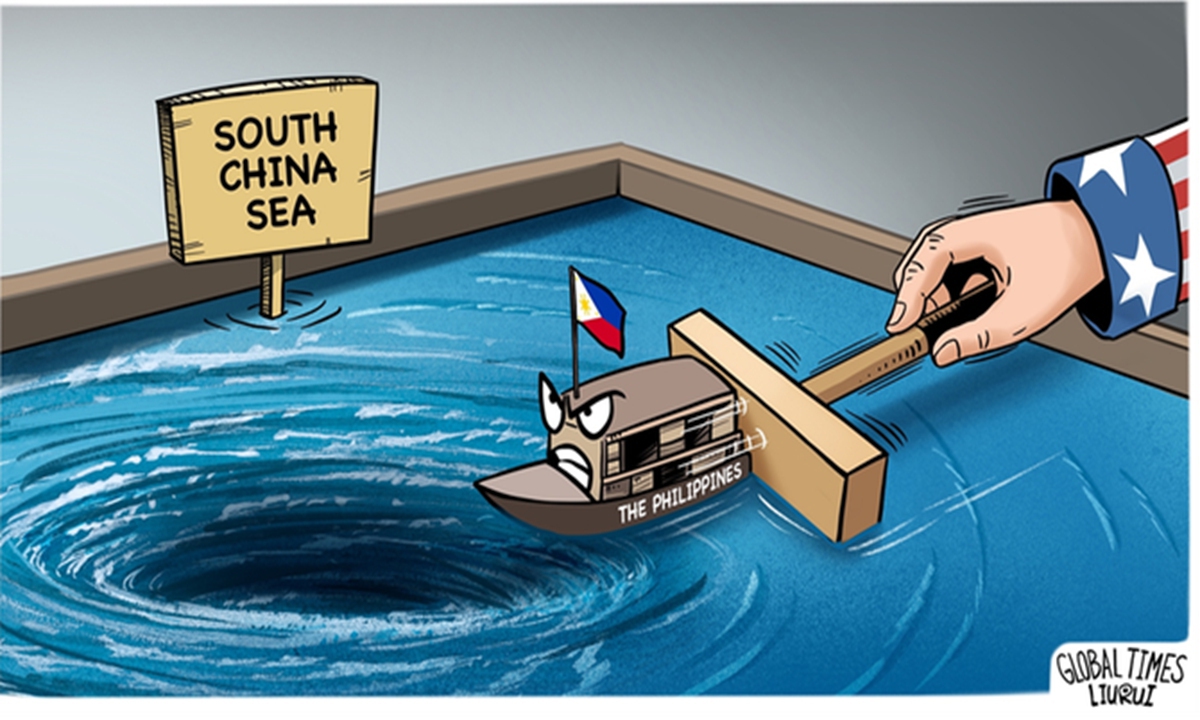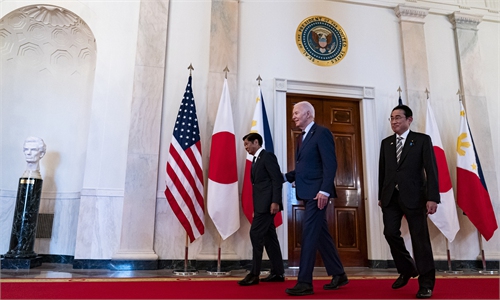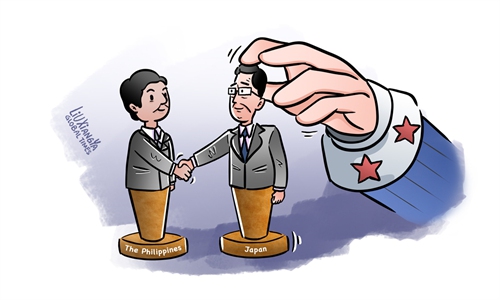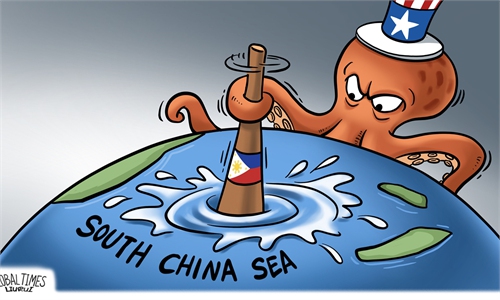
Illustration: Liu Rui/GT
If the US is the absolute master of anything, it is the art of persuading others to willingly serve as its cannon fodder. At this very moment, the US is speeding up its effort to send the Philippines into the line of fire.
US Army Pacific announced on Monday local time on its website that "in a historic first, the 1st Multi-Domain Task Force successfully deployed the Mid-Range Capability (MRC) missile system to Northern Luzon, Philippines, as part of Exercise Salaknib 24."
What does this mean? US media The War Zone gives a blunt explanation in the headline, "Army Deploys Typhon Missile System To China's Backyard For The First Time," adding that the Typhon system, also known as the MRC, "which can fire Tomahawk and SM-6 missiles, is in the Philippines for its inaugural Indo-Pacific deployment." "It is a glimpse of what's to come as the service works through plans to permanently base these systems in China's backyard," the report reads.
The War Zone keeps flaunting that from the middle of Northern Luzon, Typhon has more than enough range to reach the southeastern corner of the Chinese mainland, as well as Hainan Island with its key naval and other bases, presenting "new challenges for Chinese forces."
This all sounds impressive, especially when analysis highlights that Typhon has the range to reach the South China Sea and the Taiwan Straits. This marks the US' first deployment of its kind since Washington's withdrawal from the Intermediate-Range Nuclear Forces (INF) Treaty in 2019. According to military experts, it displays US support for the Philippines in escalating tensions in the South China Sea, and also once again lays bare the US' attempt to disrupt China's peaceful reunification.
Yet, however fancy the Typhon system is portrayed, this round of provocation carries more symbolic significance than practical deterrence.
According to information provided by the US Army, a Typhon system battery comprises four launchers, a command post, and reload and support vehicles, all on trailers.
"It means the weapons system can be deployed and attack at a fast speed, but it has its disadvantages," Wei Dongxu, a Beijing-based military expert and media commentator, told the Global Times. Wei pointed out that the Tomahawk is a subsonic cruise missile with no radar-defeating stealth design. During an attack, it can be easily detected, tracked and intercepted by the opponent's sophisticated early warning system. For any military power with modern warships and well-developed ground-based air defense and missile defense systems, it is not particularly difficult to effectively defend against Tomahawk cruise missiles.
The SM-6, on the other hand, can fire against subsonic and supersonic aerial targets, but has no defense capability in the face of hypersonic weapons and stealth aircraft, Wei said, adding that once a missile is fired, China will launch a precise countermove.
In other words, the Typhon system can be seen as outdated missiles wrapped in a new packaging. No matter how much the US brags about it, the core of the system is, in fact, behind the times. It seems like a poor gift the US sent to the Philippines to fulfill its promises, and tie Manila more tightly to Washington's chariot.
Anyone with the slightest amount of military common sense knows that if missiles are launched from the Philippines, the Philippines itself will definitely become a target for retaliation. The Philippines should seriously consider the consequences and think again before proactively tuning itself as cannon fodder for the US, Zhang Junshe, a Chinese military expert, told the Global Times.
Hence, the biggest significance of the deployment, quite ironically, is that the Philippines has provided China reason to carry out direct military strategic strikes to counter such a provocative threat when necessary, experts underline.
Previously, the Philippines, with its behaviors in the South China Sea, was like an uncontrollable child provoking an adult with bare hands. But now, the US not only stands behind the child but also handed him a gun, encouraging him to swagger around and even cross the red line, when the child himself cannot even decide how and when to use the gun, Shen Yi, a professor at Fudan University in Shanghai, told the Global Times.
If the child ever dares to cross the line, he will find that the gun may look brand new, but is rusty on the inside and won't really hurt the adult. However, the adult can upgrade his approach to deal with the spoiled brat, Shen said.
Is the Philippines going crazy? The Philippine government is not defending the Philippines' interest. It is merely a puppet of the US.
The author is a reporter with Global Times. opinion@globaltimes.com.cn



